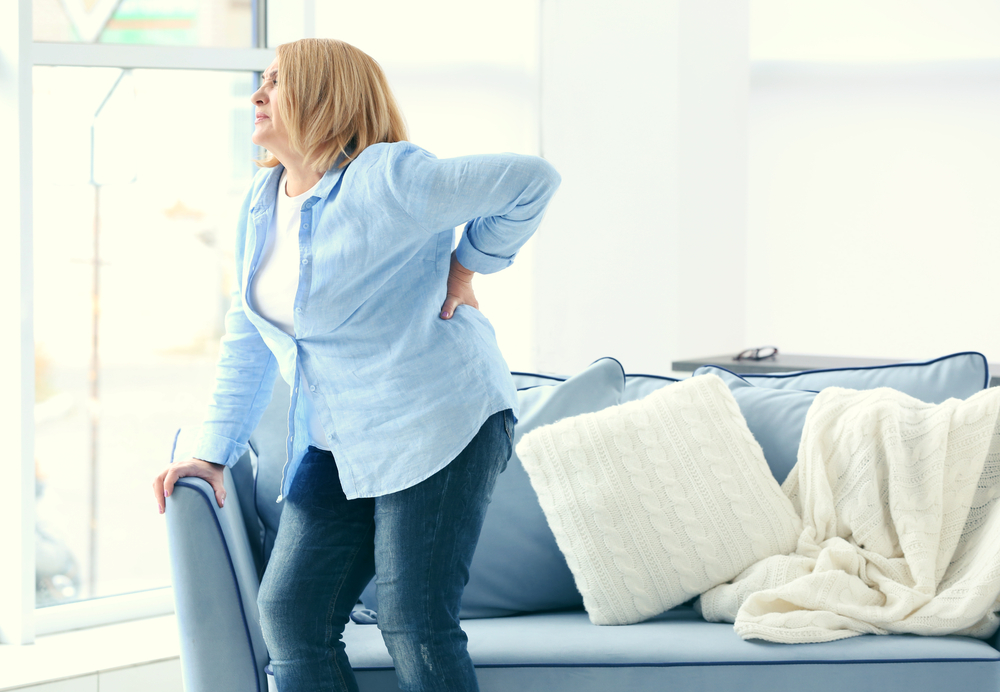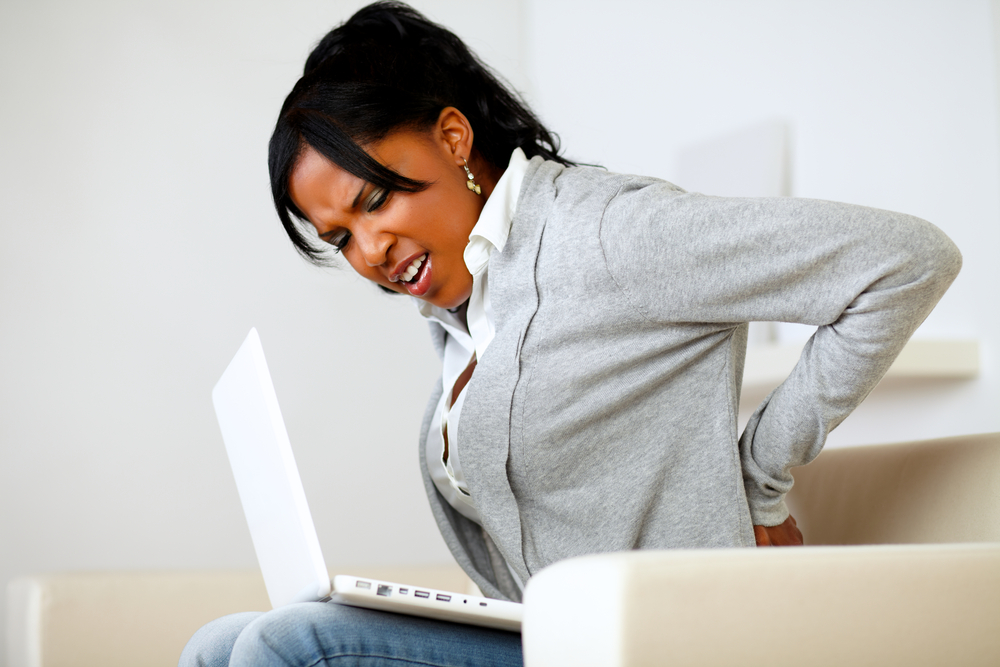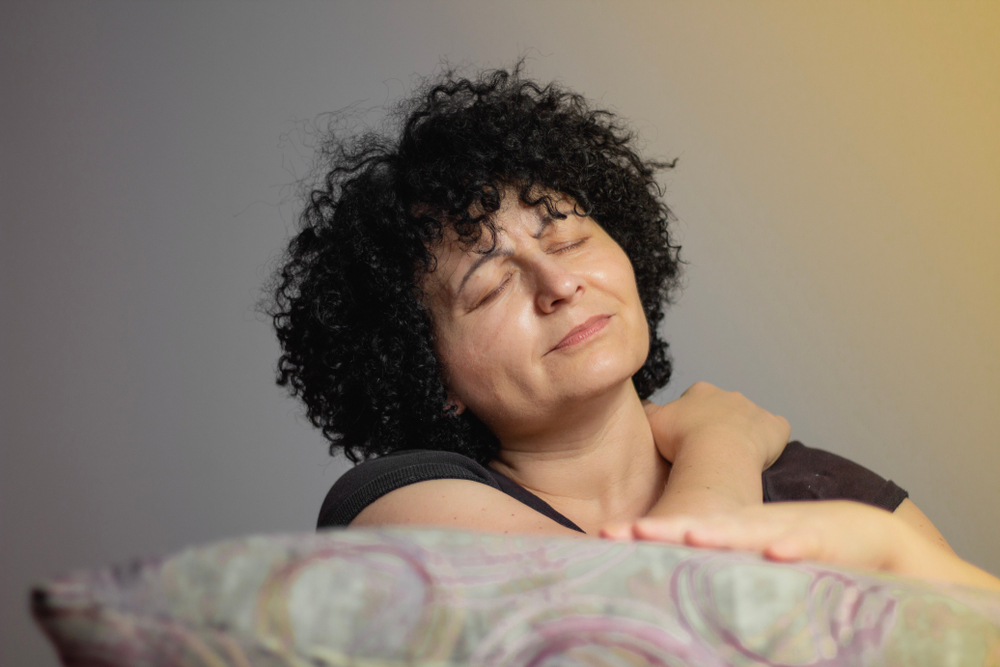If you’re anything like me, then you love to be active. Whether running, biking, or enjoying time in my garden, I’m on it. But all that bending and twisting to pull out weeds can wreak havoc on your back, right? You might feel like you’ve tried everything already and still suffer back pain. But back pain doesn’t have to be the new normal. These strategies will help you prevent back pain in the first place or finally find some back pain relief so you can enjoy a full and active midlife!

Worldwide, back pain is the single leading cause of disability, preventing many people from working as well as everyday activities. Experts also estimate that up to 80% of the population will experience back pain at some point in their lives. We are living longer, and it’s common to provide care for our elderly parents. Therefore it is vital to prevent back pain from happening or at least know how to gain back pain relief.
How To Prevent And Relieve Back Pain
Symptoms of back pain
Depending on where on your back you have hurt and how you hurt it, back pain can show up in a variety of ways. These include:
- Pain that is dull or achy, contained to the lower back
- Mild and annoying or severe and debilitating pain
- Back pain may start suddenly or slowly or coming and going and gradually get worse over time.
- Stinging, burning pain that moves from the lower back to the backs of the thighs, sometimes into the lower legs or feet; it can include numbness or tingling (sciatica)
- Muscle spasms and tightness in the lower back, pelvis, and hips
- Pain that worsens after prolonged sitting or standing
- Difficulty standing up straight, walking, or going from standing to sitting
If back pain persists or it starts with sharp pain, consult your doctor.
Fortunately, back pain relief is natural and spontaneous for most of us. However, it often takes a long time for many of us to get active after it.

Common causes of back pain in over 50s
You might think that your lifestyle choices (hello, flower bed that kills your knees and lower back!) causing your back pain. However, if you are in a healthy state of being, this should be minimal. Underlying health conditions cause your bones and muscles to weaken. This makes you more susceptible to back pain. These causes include:
- Degenerative changes in discs and joints
Loss of moisture and resilience can make discs less effective as shock absorbers. Also known as degenerative arthritis. Osteoarthritis is the most common form of arthritis. Its occurrence in the spine is usually localized in the neck and lower back. - Spinal stenosis
Disc degeneration, thickened ligaments, or arthritic facet joints can narrow the spinal cord passage. This causes your body to produce more bone to stabilize the spine. These bone growths may crowd the spinal canal. This condition is called stenosis. Stenosis can put pressure on the nerve roots that branch off the spinal cord. - Spondylolisthesis
One spinal vertebra can slip forward onto the vertebra below.
Understanding the role bone health has on your back pain relief and prevention strategies is important for both men and women. Estrogen promotes the activity of bone-producing cells. It helps slow the breakdown of bones and encourages bone growth.
As you enter midlife, drops in estrogen levels compromise your bone health. You can learn more about this in this previous post on building better bones with Osteopath Dr. Justine Bernard.

Strategies for back pain relief and prevention
- Be more active
Post-menopausal women need to increase bone density through low-impact activity. Pilates is my favorite exercise regime for midlife. It helps with core support, pelvic instability, muscular imbalance, poor posture, and weak back muscles. You should also consider weight training for strength and balance exercises to prevent falls. In addition to this, it’s also important to rest when your back is inflamed. - Maintain a healthy diet
A healthy, balanced diet is essential for overall health. It’s also the core building block of your bone health in midlife. Ensure you include enough protein, calcium, healthy fats, vitamin D, and probiotics for optimal bone health and prevention of back pain. Intermittent Fasting is also a great way to support bone health. The Pursue Your Spark Blueprint goes in-depth on all of this and supports you in creating a nutrient-dense diet for which your bones will thank you! - Maintain a healthy weight.
Your hormone changes during menopause can cause you to gain weight around the belly. This extra weight pulls on the pelvis, making you more prone to lower back pain. Use the dietary and exercise strategies above to maintain a healthy weight that helps prevent back pain. - Better movement for back pain relief
Making sure that you stretch before exercising can cut out a lot of your potential back pain. Yes, that counts for even simple tasks like gardening! Try to be mindful of your movements and make sure that you protect your back by:
- Bend your knees before you bend over
- Keep objects close to your body when lifting
- Engage your abdominal muscles when on your bike
- Always face the object you are lifting. Don’t twist and lift something heavy
- You are a queen, so stand tall; no slouching!
- Quit smoking.
Smoking impairs blood flow, resulting in oxygen and nutrient deprivation to spinal tissues.
Pilates Exercises for back pain relief
Pilates is an excellent way to build both bone and muscle strength. It aids your flexibility, posture, and core strength. These points are vital in ensuring that your back is strong enough throughout your midlife to avoid back pain. Watch the video above to follow along with my top 3 Pilates exercises to prevent or relieve back pain. You can also head over to my YouTube channel for loads more Pilates workouts!
Back pain doesn’t need to be part of your life, regardless of your age. You can be proactive right now to prevent back pain before it starts. These strategies work equally well for prevention or for some much-needed back pain relief.

Heike, so true. My back went out in my 40s and I never understood what real back pain was until that point. Everything I did hurt, even moving my head or toes. I was overdoing it working out along with a lot of stress in my life. I love your tips, the doctor actually told me not to sit, but to keep moving to keep it stretched out and not stiff. Good stuff here!
Thank you, Peta, and I am sorry you had to go through this. Back pain can happen at any age. Stretching is so important!
I’ve had back pain often and being allergic to aspirin it’s always been difficult in finding relief. Preventing it is the best option thank you for sharing what we can do to keep back pain minimal,
Nancy, I am sorry to hear that you, too, have been plagued with back pain. So happy to hear that you’re able to manage the pain and keep it to a minimum.
Comments are closed.